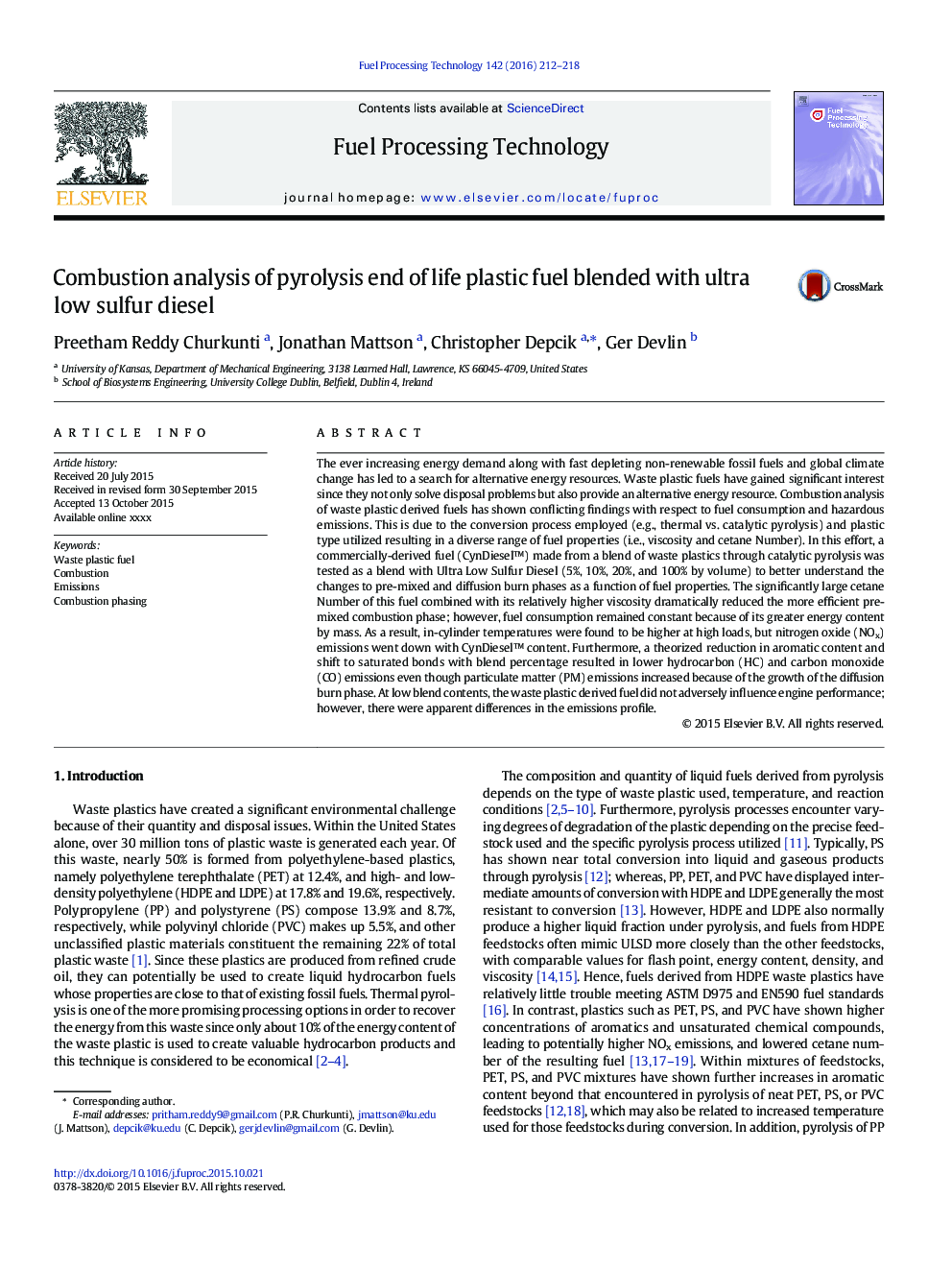| کد مقاله | کد نشریه | سال انتشار | مقاله انگلیسی | نسخه تمام متن |
|---|---|---|---|---|
| 6656717 | 461661 | 2016 | 7 صفحه PDF | دانلود رایگان |
عنوان انگلیسی مقاله ISI
Combustion analysis of pyrolysis end of life plastic fuel blended with ultra low sulfur diesel
ترجمه فارسی عنوان
تجزیه و تحلیل احتراق سوخت پایدار پیلوریلیس پلاستیک ترکیبی با دیزل فوق العاده کم گوگرد
دانلود مقاله + سفارش ترجمه
دانلود مقاله ISI انگلیسی
رایگان برای ایرانیان
کلمات کلیدی
سوخت پلاستیک زباله، احتراق انتشارات، فاز احتراق
موضوعات مرتبط
مهندسی و علوم پایه
مهندسی شیمی
مهندسی شیمی (عمومی)
چکیده انگلیسی
The ever increasing energy demand along with fast depleting non-renewable fossil fuels and global climate change has led to a search for alternative energy resources. Waste plastic fuels have gained significant interest since they not only solve disposal problems but also provide an alternative energy resource. Combustion analysis of waste plastic derived fuels has shown conflicting findings with respect to fuel consumption and hazardous emissions. This is due to the conversion process employed (e.g., thermal vs. catalytic pyrolysis) and plastic type utilized resulting in a diverse range of fuel properties (i.e., viscosity and cetane Number). In this effort, a commercially-derived fuel (CynDieselâ¢) made from a blend of waste plastics through catalytic pyrolysis was tested as a blend with Ultra Low Sulfur Diesel (5%, 10%, 20%, and 100% by volume) to better understand the changes to pre-mixed and diffusion burn phases as a function of fuel properties. The significantly large cetane Number of this fuel combined with its relatively higher viscosity dramatically reduced the more efficient pre-mixed combustion phase; however, fuel consumption remained constant because of its greater energy content by mass. As a result, in-cylinder temperatures were found to be higher at high loads, but nitrogen oxide (NOx) emissions went down with CynDiesel⢠content. Furthermore, a theorized reduction in aromatic content and shift to saturated bonds with blend percentage resulted in lower hydrocarbon (HC) and carbon monoxide (CO) emissions even though particulate matter (PM) emissions increased because of the growth of the diffusion burn phase. At low blend contents, the waste plastic derived fuel did not adversely influence engine performance; however, there were apparent differences in the emissions profile.
ناشر
Database: Elsevier - ScienceDirect (ساینس دایرکت)
Journal: Fuel Processing Technology - Volume 142, February 2016, Pages 212-218
Journal: Fuel Processing Technology - Volume 142, February 2016, Pages 212-218
نویسندگان
Preetham Reddy Churkunti, Jonathan Mattson, Christopher Depcik, Ger Devlin,
